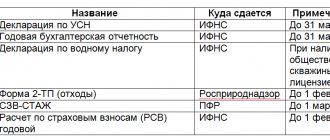Home / Real estate / Land / Use, ownership / Right to use land
Back
Published: 02/15/2017
Reading time: 10 min
4
2940
On the territory of any SNT there are lands of two different categories: those that belong to citizens and the partnership as a legal entity.
If gardeners own their plots as owners and can dispose of them at their own discretion, then with public lands the situation is somewhat different.
- Legislation
- What are public lands in SNT
- The procedure for using common land SNT
- What violations may occur when using the common land of SNT and responsibility for them
Comparison of concepts
Different laws use different concepts to designate the objects in question:
- Article 262 of the Civil Code and Article 85 of the Land Code operate with the concept of “public land plot”;
- The town planning code uses the term “public areas”.
REFERENCE: Although the Civil Code and the Land Code use the same wording, the meaning given to it is different. The Land Code lists the objects of the road network, as well as beaches and water bodies. The Civil Code speaks of any unfenced areas classified as public property, and these also include forests, swamps, and meadows where picking berries and mushrooms is allowed.
More information about the right to use forest and water resources lands owned by the state can be found in a separate article.
The Town Planning Code provides a definition of public areas, and for clarification, a non-exhaustive list is included, which echoes the list from Part 12 of Art. 85 ZK.
Summarizing the overview of concepts, it should be noted that it is more correct to talk not about lands, but about public land plots.
They can be included, as stated in Art. 85 ZK, to any territorial zones, that is, to public and business, residential, industrial, and so on.
This is natural, because all these areas must have streets.
However, when turning to the Civil Code, another contradiction in concepts emerges: territorial zones are the zones for which urban planning regulations are established, and Part 4 of Art. 36 of the Civil Code establishes that town planning regulations do not apply to plots within public areas. That is, according to the Civil Code, public lands are not included in any territorial zones.
On our website you will find a lot of materials talking about the right to use land plots, and not only those that are public lands. From them you will learn:
- In what case is a government act required?
- To whom is the right to free use of memory given and what does it mean and what is the peculiarity of such urgent use?
- What does the right to permanent, unlimited use of a site mean and what to do if it is terminated?
- What does permitted use of memory mean and what is meant by using memory for purposes other than its intended purpose?
- What are the features of using agricultural land?
Taxation procedure
Public land owned by the state is subject to a special form of taxation:
- If the plot is leased, while maintaining the right of general use, then all users pay the tax. If this right does not exist, then the payment is made by the tenant.
- If the site is not leased out or for indefinite use, then the land tax is replaced by a tax according to the intended purpose and purpose of use for all potential users. For example, a roadway, taxpayers pay a transport tax for the use of the road.
- Land owned by partnerships is subject to tax, which is paid by all share owners jointly or in specified parts.
- The taxation regime is considered special - this is determined by the status of the territory, its intended purpose and possible options for use.
It is precisely because of the social status that it is impossible to use the classical form of taxation for the sphere of fiscal legal relations for such lands, since the territory is permanently owned by the state.
The tax amount is divided proportionally among all citizen users.
Contents of the right to common land use
The Civil Code of the Russian Federation indicates two components of the right to use public lands:
- the possibility of staying in such areas;
- the possibility of collecting existing natural objects.
However, these powers may be limited by regulations or a decision of the owner, that is, a public entity.
REFERENCE: Walking along the streets, driving along highways, relaxing on a bench in the park is the implementation of the right of general use of land in question. A paid entrance to the park, a toll road, blocked traffic on streets and squares - these are possible restrictions set by the owner.
In theory, everything seems clear, but any civil right manifests itself in the possibility of its judicial protection. And when trying to protect the right in question from attacks by other persons, a person may face the fact that he is not recognized as a proper plaintiff.
For example, if a shopping kiosk is installed on the street, a pedestrian who is disturbed by this kiosk is unlikely to be able to file a lawsuit to dismantle the shopping pavilion, since he will not be able to provide evidence of his subjective right that is being violated.
For illegal trade, they will only be brought to administrative responsibility due to violation of the rules for obtaining a trade permit and unauthorized occupation of land.
A passerby will not be able to defend his interests in court. Another legal aspect is also important. Some experts attribute the design of common use of lands not to a civil law, but to an environmental and legal nature. That is, this authority is recognized as a type of environmental right, and not as an independent property right.
Objects and subjects of public land use
With regard to objects of law, it is important to decide whether their cadastral registration is required or whether the objects can be any public lands. Both the Civil Code and the Land Code talk about individually defined things - areas that should have boundaries formed during land surveying.
IMPORTANT! The Cadastral Act answers in the affirmative the question of whether the road network and other similar elements of urban planning should be registered as public property. In the course of complex cadastral work, the formation of areas occupied by these objects, their surveying and cadastral registration are carried out.
At the same time, if we take into account the environmental and legal nature of the common use of land, then the objects can be any land, no matter whether they are registered. This has its own logic, because when walking through urban areas or rural spaces, we do not make any disposal of lands, so registration does not play any role here.
Only citizens, and not other participants in civil transactions, are subjects of law; legal entities are not given this opportunity, which is due to the very nature of the legal relations under consideration.
Article 262 of the Civil Code: scope of action
Comments to Part 1 of Art. 262 of the Civil Code agree on a broader interpretation of the concept of public land plots than that given in Article 85 of the Land Code.
The Civil Code obviously includes among such lands forest lands that are not regulated by the Land Code.
Commentators provide links to Art. 11 of the Forest Code, which allows you to freely be in forests and collect non-timber resources there.
Commentators pay special attention to the limits of the exercise of law. A public entity cannot restrict access to a site arbitrarily. Different laws contain restrictions of varying degrees of specificity. Thus, the Forest Code prohibits the collection of species included in the Red Books.
REFERENCE: Part 2 of Art. 262 contains a rule not related to the right of general use to land. It talks about the right of passage through someone else's property if it is not fenced.
Renting: a controversial practice
Article 85 of the Land Code contains a ban on the privatization of public land. Arbitration courts interpret this rule differently:
- some write that the lease of such lands is unacceptable due to the ban on privatization (FAS NWO, NKO, Far Eastern District);
- others believe that they cannot be transferred into private ownership, but renting is not prohibited (FAS of the Central, Volga Region).
The ability to legally set up a kiosk on a boulevard depends on the region in which the facility is located.
What is included in the category of public land?
To satisfy civic needs, legislation allocates special areas for public use. The status of the land allows citizens to be on it legally and allows them to freely use the objects and resources located on it.
Land plots suitable for public free use include the following:
- streets;
- areas of settlements;
- embankments;
- squares and boulevards;
- public beaches, water features and parks;
- driveways and roads;
- public parking, bus stops, etc.
Citizens, in accordance with land legislation and the legal regime, have the opportunity to use these territories and the natural and technical objects located on them.
Public lands are prohibited from being transferred to individual ownership. Some objects can be re-registered for temporary use (rented out), taking into account that the new owner will not restrict the right of public use of the territory (its original purpose).
Public lands in SNT
Common property in an SNT can be the property of the SNT itself or the joint property of its members.
In addition to SNT members, people who are not members of the organization may have plots in gardens - then they are obliged to pay gardening for the use of public land in SNT.
Title documents for common property - documentation that SNT must have.
The allocation of plots for common facilities is carried out within the framework of SNT land surveying. Based on it, plots must be registered with Rosreestr. If complex cadastral work is carried out in SNT, common areas will also be formed and reflected on the plan map.
As we can see, there are many legal problems with public lands. Different laws give different meanings to this concept. The ban on privatization is ambiguous - courts have different interpretations of the possibility of transferring them for lease. In any case, it is clear that these areas must be registered as public property. The situation is different with the common property of the SNT - there the common land is assigned to the SNT and the right to use the land for gardening is free for gardening members and paid for those who are not members of the association.
How and where to apply?
An application for the provision of public land is submitted to the authorized administrative authorities (in accordance with Article 39.2 of the Land Code of the Russian Federation).
The application is submitted in several ways:
- personal visit;
- transfer of a package of documents through the MFC;
- delivery of documents by registered mail.
In a situation with public land, it is preferable to visit the administration yourself. Civil servants will advise you on the necessary documents and calculate the chances of obtaining a positive result.
To complete a preferential transaction for the provision of land, the following documents will be required:
- the applicant's identity card;
- a document that substantiates the applicant’s membership in a preferential category of citizens;
- documents for construction (if there is an object on the site);
- boundary documents, if the applicant uses them;
- cadastral passport or land extract.
A copy is made for each document. More information about the list of required documents for each category of citizen-applicants can be found in the reception administration or on the official website of the multifunctional center.
The application does not require notarization . A notary will be required to issue a power of attorney if the applicant will provide documents through a proxy. The application procedure for citizens is not subject to state fees and is free.
Submitting a rental application
The user has the right to apply for the lease of a state plot. In response, the administration must announce an auction to provide the site for rent. If no additional applicants are found within a month, the auction is closed and an agreement is drawn up with the first applicant.
The rental agreement is concluded with the administration within 14 working days. The period for consideration of an application for the gratuitous provision of allotment to preferential categories of citizens is up to 30 working days.










